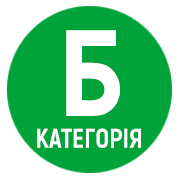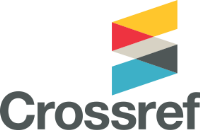COMMUNICATIVE CREATIVITY IN THE STRUCTURE OF PROFESSIONAL CREATIVE ABILITIES OF FUTURE SPECIALISTS
DOI:
https://doi.org/10.32782/2787-5137-2025-1-14Keywords:
creativity, communicative creativity, soft skills, communication orientation, higher education applicants, creativity, divergent thinkingAbstract
Introduction. The article analyzes the phenomenon of communicative creativity of the individual, defined as a soft skill of future specialists. Differences in the development of different types of orientation in communication of applicants with different levels of communicative creativity are shown.It is shown that communicative creativity is a soft skill of the future specialist and positively contributes to the dialogic in communication, stopping by non -constructive types of communicative orientation (manipulative, authoritarian, indifferent, conformal).In modern science, the problem of communicative creativity is little researched despite the fact that creativity is recognized as a flexible skill of a 21st century specialist. The status of communicative creativity is insufficiently defined, and empirical intelligence concerning its psychological characteristics is extremely small. All these circumstances made the need to study the peculiarities of communicative creativity of future specialists of different specialists.The purpose of the study is to determine the features of the focus in communication of future specialists, depending on the level of communicative competence.Scientific novelty. Communicative creativity is a stable characteristic of personality, which contains intellectual, emotional and behavioral components, the totality of which contributes to non-standard solutions in communicative situations, the manifestation of creativity in communication, generation of original ideas and ways of communication, the choice of optimal strategies. Communicative creativity is the ability of an individual to unusual and effectively solve problems by strengthening the communicative factor, the ability to open fundamentally new or advanced solutions to solve a communicative task. Communicative creativity provides non -standard and effective recent opportunities to solve problems by increasing the communicative factor.Empirical analysis of communicative creativity was realized through the application of the methodology of O. Sannikova and R. Belousova to study communicative creativity, as well as S. Bratchenko’s methodology to study the orientation of the individual in communication.Conclusions. It is shown that communicative creativity is a flexible skill of a future specialist and positively contributes to dialogicity in communication, standing in the way of non-constructive types of communicative orientation (manipulative, authoritarian, indifferent, conformist).
References
Амплєєва О.М. Теоретична модель емоційного інтелекту як важливого компоненту професійної діяльності психолога. Вісник Львівського університету. Серія «Психологічні науки». Львів: Львівський національний університет імені Івана Франка, 2018. Вип. 3. С. 3–9.
Антошків А.В., Колісник М. Комунікативна креативність особистості: психологічний зміст та детермінанти розвитку. Вісник ХНПУ імені Г.С. Сковороди. Психологія. Вип. 65. С. 8–24.
Averill J. R. A tale of two snarks: emotional intelligence and emotional creativity compared. Psychological Inquiry. 2004. 15. Р. 228–233.
Baer J. Creativity and divergent thinking. Hillsdale, NJ: Lawrence Erlbaum. 1993. 136 р.
Gu C. Social creativity psychology. Peking: China Social Science Press. 2011. 132 р.
Kuipers B. S. Team development and team performance: Responsibilities, responsiveness and results : Doctoral dissertation degree of Doctor of Philosophy. The University of Groningen: Ridderkerk, 2005. 157 р.
Mickan S. Characteristics of effective teams: a literature review. Australian Health Review. 2000. Vol. 23. Рp. 179–192.
Tasova A.B., Niyazova G.Zh., Berkimbayev K.M., Pralieva R.E. Problems of formation of the future primary school teachers communicative creativity. RUDN Journal of Informatization in Education. 2018. 15 (2). Рр. 182–189.







